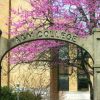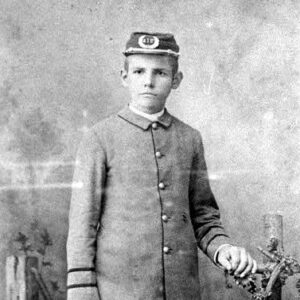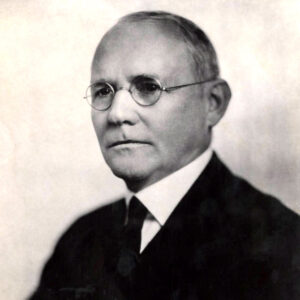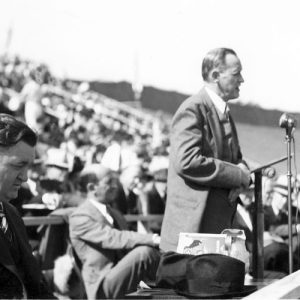calsfoundation@cals.org
John Clinton Futrall (1873–1939)
John Clinton Futrall was an influential figure in Arkansas higher education. Serving as president of the University of Arkansas (UA) in Fayetteville (Washington County) for more than two and a half decades in the early part of the twentieth century, he oversaw the transformation of the state’s higher-education system.
John C. Futrall was born on March 9, 1873, in Jackson, Tennessee, to Thomas Andrew Futrall and Emma Headen Futrall. One of seven children, Futrall received his early education in the public schools of Marianna (Lee County), where his father had served as superintendent of schools. In 1888, he graduated from the Marianna Male and Female Institute and then began attending the University of Arkansas. In 1890, Futrall and four other UA students founded the Xi chapter of the Kappa Sigma fraternity at UA. This was the first fraternity at UA, and Futrall was the chapter’s first initiate. After two years at UA, he had to leave the school because he violated school rules relating to card playing.
He continued his education at the University of Virginia, obtaining a bachelor’s degree and a master’s degrees. He subsequently did additional graduate work at Johns Hopkins University, the University of Chicago, and in Germany at universities in both Bonn and Halle. Having majored in mathematics, Latin, and Greek at the University of Virginia, Futrall originally sought a position teaching mathematics at UA. There was no vacancy in that department, but the Latin Department welcomed him back to the state.
Futrall married Annie Gaines Duke, a Fayetteville native, in June 1898. The couple had three children.
In addition to his teaching responsibilities, in 1894 he also organized and served as coach of the university’s football team. Having been exposed to the sport at the University of Virginia, he oversaw the fledgling program for three seasons.
In 1913, Futrall was appointed acting president of UA. After a year in that post, the board of trustees removed the “acting” from his title, and he undertook the challenge of heading a school in deep financial trouble. This trouble was rooted in the lack of consistent funding by the state and exacerbated by a scandal that had led both to the expulsion of thirty-six students—many from prominent families—as well as the resignation of Chancellor John Tillman in 1912. By instituting personnel cuts and salary reductions, Futrall stemmed the tide in the short term, while his efforts in conjunction with Governor Charles Brough helped establish a consistent source for state funding of the university. Over the next quarter century, he would lead the transformation of the school.
Futrall’s record long tenure was not without controversy, and there were various efforts on the part of students and legislators to oust him. However, he survived all of them, as well as efforts by the Arkansas Farm Bureau to remove the College of Agriculture from the university. Responding to the effort to shift control from the university to the Farming Bureau, which was backed by the state’s banking community, Futrall appointed a new dean who fit the requirements of the Farm Bureau but who was loyal to him. At the same time, despite the ongoing financial challenges, he expanded the university’s agricultural land holdings, no small feat given the reductions in funding resulting from World War I and the Great Depression, but one which strengthened the university’s hand in dealing with the bankers.
In addition, he could not avoid being involved with the issue that roiled much of the southeast in the 1920s: the teaching of evolution. While it was primarily a battle fought in high schools, Futrall did publicly express his opposition to the Arkansas referendum that sought to ban the teaching of evolution in state-funded schools, and he was no less supportive of the right of his faculty members to engage in the campaign.
In the end, Futrall’s time in office was marked by growth and development. For one, he was able to secure a chapter of Phi Beta Kappa for the university. Over the course of his quarter century of leadership, the university’s enrollment almost quadrupled, and both the College of Business and the School of Law were established. The university also earned accreditation from the North Central Association.
His tenure as president represented a period of major campus growth, with numerous buildings being erected during that time. Foremost among those were Vol Walker Hall, the Agricultural Building, and the Chemistry Building, as well as the Engineering Hall. The Women’s Gymnasium, a new dormitory, the Chi Omega Greek Theatre, and the Razorback stadium were also constructed during Futrall’s presidency. The student union that began bearing his name, Futrall Memorial Hall, was under construction when he died, and a subsequent student vote resulted in its being named in his honor.
Futrall died on September 12, 1939, in an automobile accident as he was returning home after a school business trip in Little Rock (Pulaski County). He is interred in the Evergreen Cemetery in Fayetteville.
For additional information:
“John C. Futrall.” Office of the Chancellor, University of Arkansas. https://chancellor.uark.edu/about/presidents-chancellors/john-c-futrall.php (accessed January 25, 2021).
Jones, Virgil L. “John Clinton Futrall, University Builder.” Arkansas Historical Quarterly 6 (Summer 1947): 97–116.
William H. Pruden III
Ravenscroft School
 Early Twentieth Century, 1901 through 1940
Early Twentieth Century, 1901 through 1940 Education, Higher
Education, Higher John Futrall
John Futrall  John Futrall
John Futrall  Futrall House
Futrall House  John Clinton Futrall
John Clinton Futrall  John Clinton Futrall
John Clinton Futrall  Razorback Stadium Dedication
Razorback Stadium Dedication  Vol Walker Library Dedication
Vol Walker Library Dedication 




Comments
No comments on this entry yet.